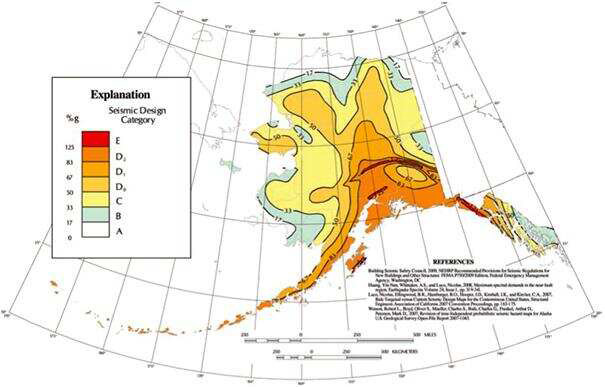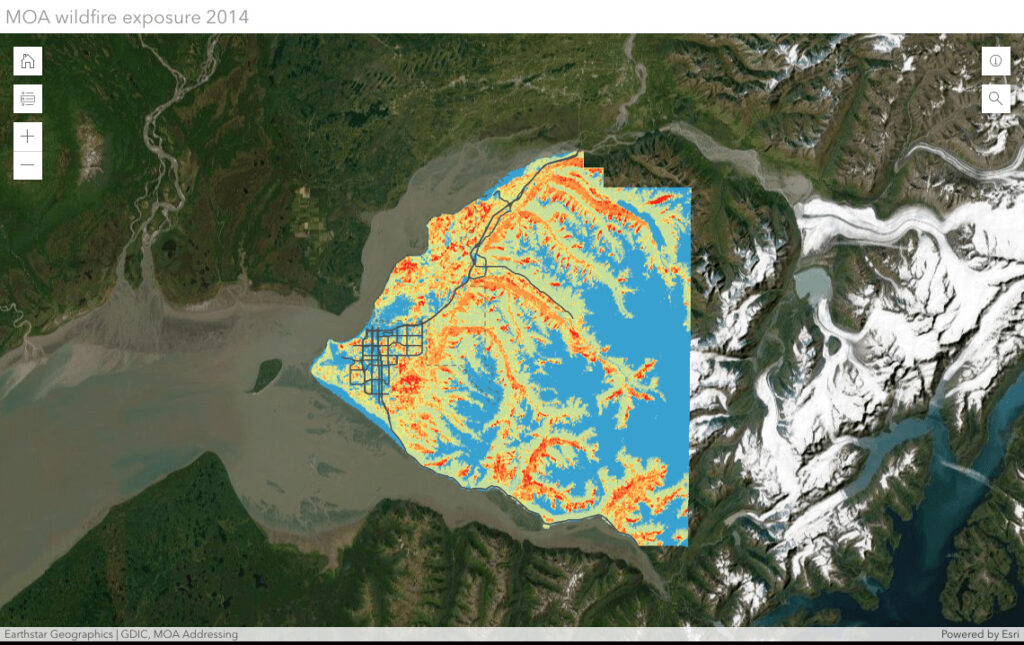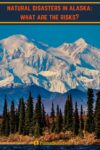There are over 700,000 people who live in Alaska. Many are no strangers to natural disasters and hazards like severe winters. However, a lot of Alaskans don’t realize just how many different natural disasters can occur in the state or how the risk for some disasters is increasing.
Here we will go over the most common natural disasters in Alaska, the risk for various disasters, the worst natural disasters to hit the state since 2000, and what residents can do to be prepared.
Is Alaska At Risk of Natural Disasters?
Alaska has a low risk of natural disasters compared to the rest of the country. There have been 50 disaster declarations in Alaska since 2000. Of these, 35 were Major Disaster Declarations. There were 7 disaster events affecting Alaska, which caused more than $1 billion in damages.
Note that these numbers only indicate declared disasters in Alaska. More minor and local disasters occur much more frequently in the state: a disaster is declared once every 90 days in Alaska.
However, because Alaska is so sparsely populated, these disasters aren’t likely to cause substantial monetary damage or require federal help.
Worst Natural Disasters in Alaska Since 2000
Even though natural disasters frequently occur in Alaska, they aren’t likely to cause large amounts of damage to private property or have fatalities. These are the worst recent natural disasters in Alaska.
- 2004 Alaska Wildfires: Included 701 fires which burnt more than 6,600,000 acres
- 2008 Tanana Valley Flood: $10 million and no loss of life
- 2009 Alaska Floods: $29 million in damages and no loss of life
- 2009 Minto Flats South Fire: Burnt more than 300,000 acres
- 2011 Bering Sea Cyclone: At least $24 million in damages and 1 fatality
Most Common Natural Disasters in Alaska
1. Earthquakes
Earthquakes occur very frequently in Alaska. There is an average of 1,000 earthquakes each month in the state. Some of these earthquakes are very high magnitudes.
On average, Alaska will have six magnitude 6 or 7 earthquakes per year and 45 magnitude 5 or 6 earthquakes per year. Seven of the ten largest earthquakes ever recorded were in Alaska.
However, most of these earthquakes occur along the Aleutian Trench, which has a population of just over 5,000 people. Because of this region’s low population and small communities, earthquakes in Alaska are unlikely to cause fatalities or large amounts of property damage.
However, earthquakes in Alaska have caused significant damage before. In 1964, for example, a magnitude 9.2 earthquake and ensuing tsunami in the Prince William Sound area caused more than $2.3 billion in damages (today’s value) and 131 deaths. This was the second-largest earthquake ever recorded.
Because earthquakes are impossible to predict, Alaskans must be prepared for earthquakes.
To get prepared, read: How to Prepare for an Earthquake

2. Floods
Flooding in Alaska is very common, especially in spring. This is when melting river ice breaks up, floats downstream, and can cause ice jams. The water cannot pass through the ice jam, and the surrounding areas flood.
The worst recent ice jam in Alaska occurred in 2013 when the Galena flooded, forcing residents to evacuate. A federal disaster was declared. Damages were estimated at over $80 million.
Approximately 66,000 properties in Alaska are at risk of flooding. Since Alaska only has about 255,000 households in the entire state, this is a huge percentage of residents likely to face floods. Because of climate change, the risk of flooding in Alaska is only expected to increase.
3. Wildfires
Alaska regularly sees wildfire natural disasters. Since 2000, there have been 25 disasters declared in the state due to wildfires. While wildfires have always been part of life in Alaska, the number of wildfires is rising.
From 2000 to 2020, 2.5 times more acres were burned in Alaska than in the previous 20 years. Because of climate change, this number is projected to increase by 169% by 2050.
Homes in boreal forests, which includes those in the Anchorage area, are particularly at risk of wildfires. The Alaska Forest Department’s “Firewise” program advises residents to minimize wildfires, such as replacing certain shrubs and trees that burn easily.

Image credit: “Wildfire hazard map gives residents important risk information” by Jennifer Schmidt, found at UAA.Alaska.edu, CC BY-NC 4.0.
4. Typhoons
While they don’t occur frequently, Alaska can get devastating typhoons. These storms can rip the foundations off homes, destroy boats, damage roads and cause dangerous coastal flooding. One example is Typhoon Merbok in 2022, which caused such extensive damage that a Federal Disaster was declared.
5. Severe Winter Storms
Not surprisingly, Alaska frequently has severe snow storms. Heavy winds from blizzards can damage homes and power lines, resulting in power outages. Flooding and landslides regularly occur. Storm winds also can drive large chunks of ice onto land, which results in further damage. Blocked roads mean that residents can get trapped in their homes.
While Alaskans know to be prepared for severe winter weather, it doesn’t mean that there aren’t fatalities. The risk of dying from hypothermia is 10x higher in Alaska than in the rest of the states. People also die during winter storms in automobile accidents and heart attacks from overexertion.
6. Drought
Historically, Alaska is not at risk of drought: it is one of the rainiest parts of the USA. However, in recent years, parts of Alaska have experienced droughts. Southeast Alaska was under an “Extreme Drought” declaration from October 2016 to December 2019. As temperatures increase in Alaska, droughts are only likely to increase.
Much of Alaska’s infrastructure and economy relies on water, such as water for hydropower or salmon hatcheries. Because of this, drought in Alaska could cause power outages and economic damage. Drought also increases the risk of wildfires, which Alaska is already plagued with.
https://www.fema.gov/disaster/declarations
https://www.ncei.noaa.gov/access/billions/events/
https://www.ktoo.org/2022/03/04/extreme-drought-southeast-alaska/
https://www.alaskasnewssource.com/2022/06/16/severe-drought-has-returned-alaska-first-time-since-2019/
https://uaf-iarc.org/wp-content/uploads/2022/02/Southeast-Alaska-drought-HISTORY.pdf
https://www.washingtonpost.com/news/wonk/wp/2016/12/17/cold-temperatures-kill-more-americans-than-hot-ones-cdc-data-show/
https://www.ncbi.nlm.nih.gov/pmc/articles/PMC6474461/
https://www.weather.gov/media/ajk/brochures/Winter_Weather_Hazards.pdf
https://www.nbcnews.com/news/us-news/alaska-prepares-powerful-storm-said-strongest-decade-rcna48167
https://www.thenewstribune.com/news/weather-news/article266759156.html
https://www.weather.gov/media/water/WY09%20Flood%20Loss%20Summary.pdf
https://earthquake.usgs.gov/earthquakes/events/alaska1964/largest_in_alaska.phphttps://www.weather.gov/media/water/WY09%20Flood%20Loss%20Summary.pdf
https://www.climatehubs.usda.gov/hubs/northwest/topic/climate-change-and-wildfire-alaska
https://earthobservatory.nasa.gov/images/81227/ice-jam-on-the-yukon-river-floods-galena-alaska


